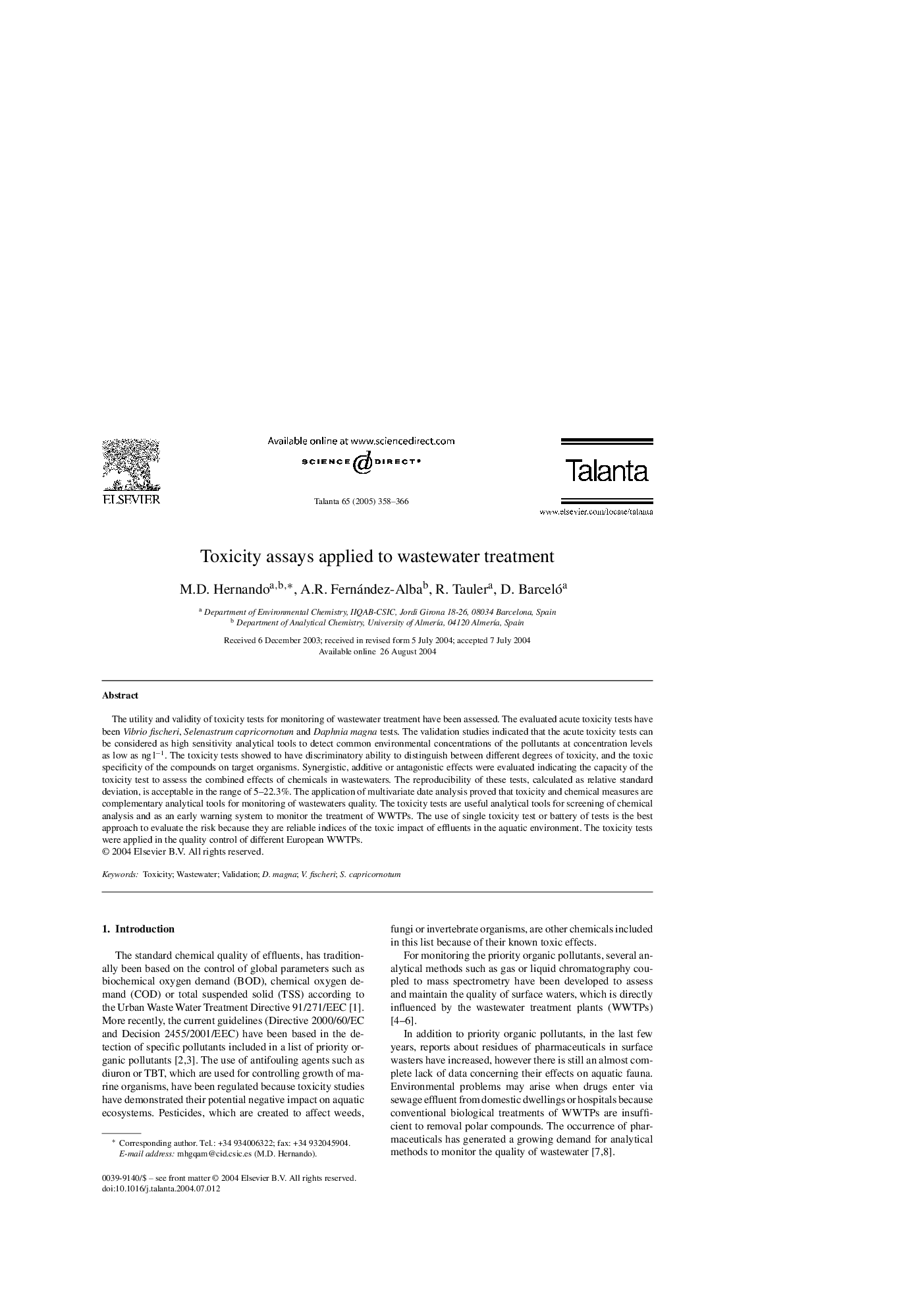| Article ID | Journal | Published Year | Pages | File Type |
|---|---|---|---|---|
| 10560056 | Talanta | 2005 | 9 Pages |
Abstract
The utility and validity of toxicity tests for monitoring of wastewater treatment have been assessed. The evaluated acute toxicity tests have been Vibrio fischeri, Selenastrum capricornotum and Daphnia magna tests. The validation studies indicated that the acute toxicity tests can be considered as high sensitivity analytical tools to detect common environmental concentrations of the pollutants at concentration levels as low as ng lâ1. The toxicity tests showed to have discriminatory ability to distinguish between different degrees of toxicity, and the toxic specificity of the compounds on target organisms. Synergistic, additive or antagonistic effects were evaluated indicating the capacity of the toxicity test to assess the combined effects of chemicals in wastewaters. The reproducibility of these tests, calculated as relative standard deviation, is acceptable in the range of 5-22.3%. The application of multivariate date analysis proved that toxicity and chemical measures are complementary analytical tools for monitoring of wastewaters quality. The toxicity tests are useful analytical tools for screening of chemical analysis and as an early warning system to monitor the treatment of WWTPs. The use of single toxicity test or battery of tests is the best approach to evaluate the risk because they are reliable indices of the toxic impact of effluents in the aquatic environment. The toxicity tests were applied in the quality control of different European WWTPs.
Related Topics
Physical Sciences and Engineering
Chemistry
Analytical Chemistry
Authors
M.D. Hernando, A.R. Fernández-Alba, R. Tauler, D. Barceló,
